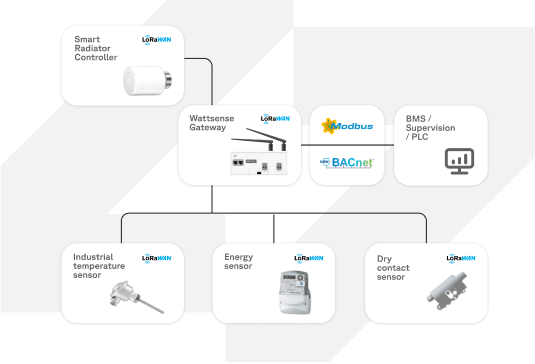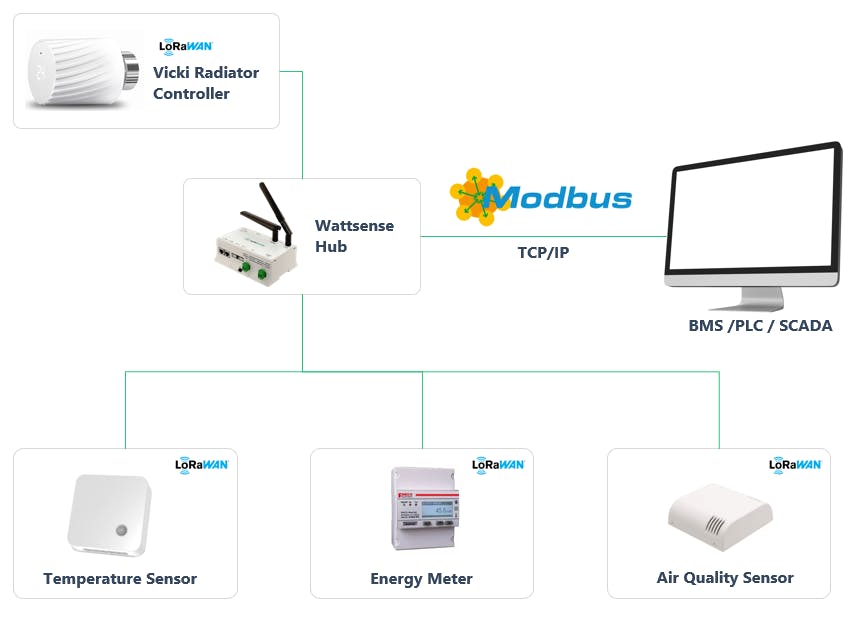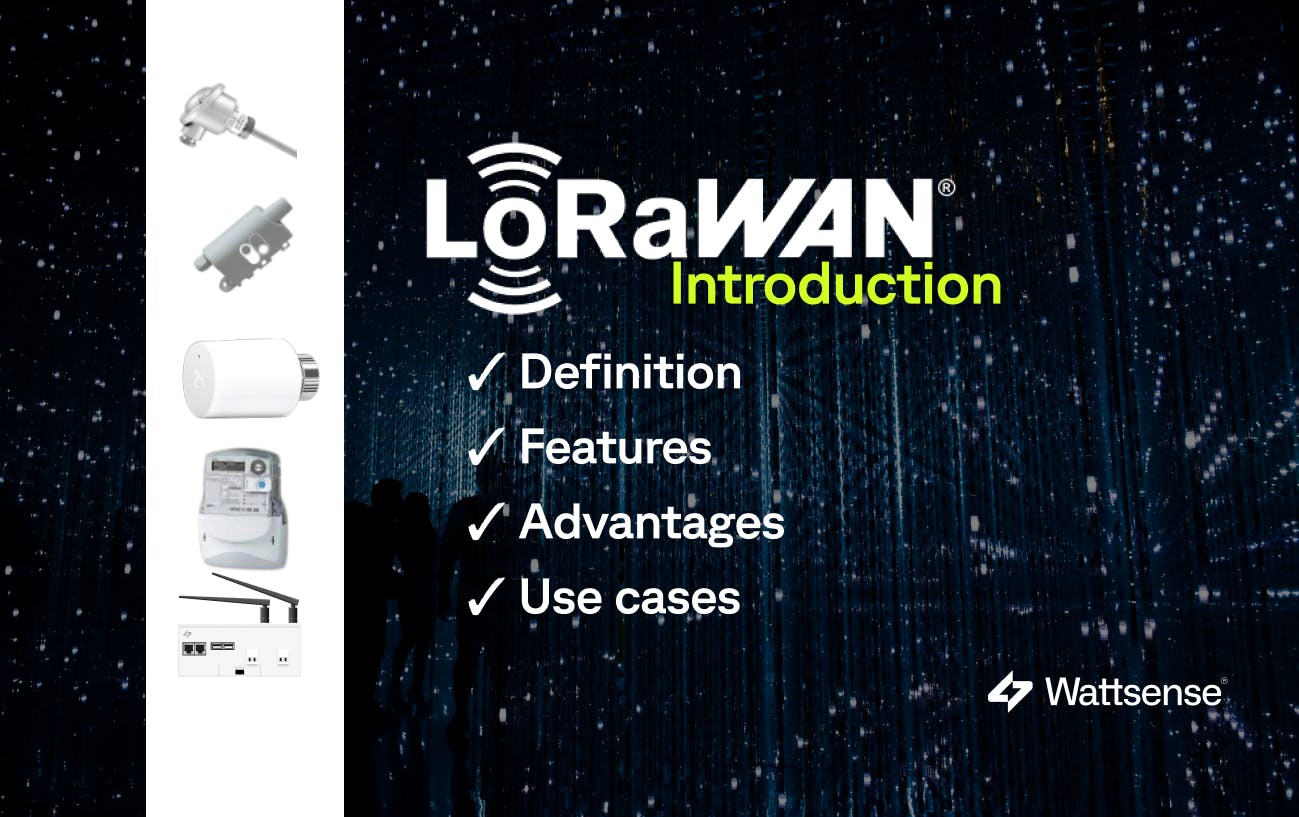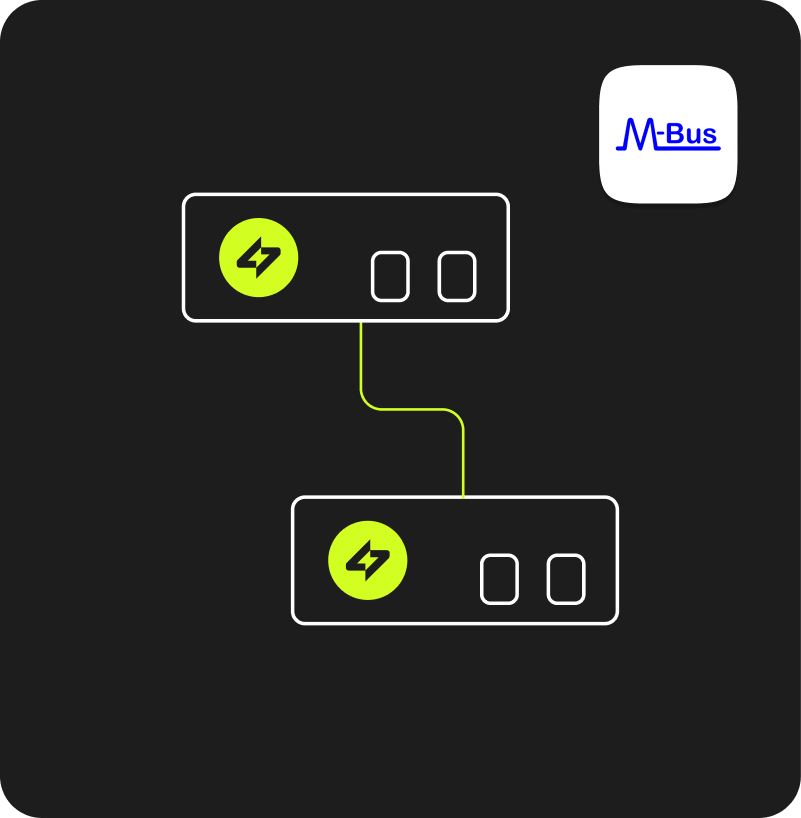LoRaWAN to Modbus TCP functionality for quick BMS installation and management

The LoRaWAN to Modbus TCP function allows users to locally collect data on any sensor, such as consumed electricity, water, gas, air quality, temperature, or even other building parameters, which otherwise have to be checked separately.
The functionality centralizes information with a complete system overview displayed in our user-friendly console, or it can also be redirected to your preferred supervision system, such as SCADA.
The Wattsense LoRaWAN to Modbus functionality implements a Modbus TCP Server communication.
How does the LoRaWAN to Modbus TCP functionality work?
Wattsense is an IoT solution that facilitates BMS integration and quickly connects technical assets. To simplify BMS integration, we have developed the Bridge, an intuitive LoRaWAN gateway and powerful controller designed for local building automation.

With this LoRaWAN to Modbus TCP functionality, Wattsense locally processes raw LoRaWAN frames, decrypts them, and extracts the needed data point values directly into its products without needing the Cloud. The values can be used on-premises for edge computing use cases, sent to a BMS, or to the local MQTT broker you prefer.
The Bridge can access LoRaWAN devices' values and map those values into a register address table used by Modbus-compatible BMS systems or Modbus equipment. This process is possible thanks to a unique built-in LoRaWAN server with an onboard codec manager that can decode multiple sensors.
The benefits of the LoRaWAN to Modbus gateway
Easy configuration - no programming required

With our Configuration Wizard and quick network setup, integrators can connect LoRaWAN devices to a management system in just a few clicks. The Wizard also enables fast and straightforward codec management. A compatibility checker with a library of over 500 devices also helps you verify if the equipment you want to connect matches the Wattsense solution.
Multiprotocol communication

The Wattsense solution is more than just a typical bidirectional gateway. It can communicate with LoRaWAN and with devices that speak MQTT client, BACnet IP, BACnet IP Server, M-Bus, KNX S/LTE, LON FT10, LON IP-852, LPB, and Diematic.
Time saver

Instead of spending weeks getting new sensors to communicate with a building management system, with Wattsense, you can get the job done in minutes without disrupting the building's occupants, thanks to our simple connectivity solution.
Quick ROI

By reducing integration time, you can stand out from the competition, lower your upfront investment and win more contracts. Affordable and straightforward pricing lets you engage in large deals with property owners and facility managers.
Process data locally

Integrating codecs into the Bridge allows users to connect and manage LoRaWAN sensors, decode, and extract useful information without connecting to an external provider or Cloud.
Access to Modbus TCP server

A simple, interoperable, standard way to forward LoRaWAN field data coming from different sensors to a BMS or other supervision tools like a SCADA. The Modbus server running in our Bridge can provide every data point coming from sensors. The data points are shared through our console quickly and efficiently.
If you are interested in the Wattsense LoRaWAN to Modbus gateway, you should also look into our LoRaWAN to BACnet functionality.
What is a Modbus TCP Server?

The Modbus data communication protocol is one of the most commonly used protocols in the building management sector. It was initially developed to be used with Programmable Logic Controllers (PLC).
Like Modbus RTU or ASCII, Modbus TCP is a variant of the Modbus protocol. Modbus TCP is a communication protocol that allows two or more devices to communicate via an IP network. Unlike the Modbus serial link, the Modbus TCP is not based on a hierarchical structure but a client/server model.
Modbus TCP is an open Industrial IP network specified as an RFC Internet standard. It can also be known as Modbus TCP/IP.
The transfer of information between a Modbus client and server starts when:

- The client sends a request to the server to transfer data, execute a command, or perform one of many other possible functions.

2. After the server receives the request, it runs the command or recuperates the required data from its memory.

3. The server then answers the client by acknowledging that the command is complete or offering the requested data.
The Modbus TCP functionality implements client and server services to initiate communications with controllers and I/O devices and respond to requests from controllers, SCADA, and other equipment or supervisory systems.
Without any configuration, the controller's embedded Ethernet port supports Modbus Server and does not require extra programming tactics from the user.
The Wattsense LoRaWAN to Modbus functionality brings our Cloud Service's innovation, low prices, and tech support to your on-premises projects. Facilitate configuration, BMS integration, and data acquisition with this feature. Try the LoRaWAN to Modbus functionality. Request a demo.
Want to learn more about the Wattsense connectivity solution?
Discover our solutionContinue reading



